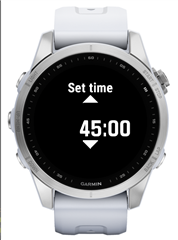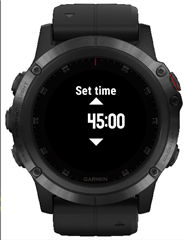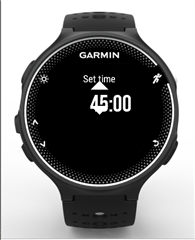I'm trying to figure out a good way to place things on the screen, but the dc.getHeight() confuses me. My code is like this:



I'm trying to figure out a good way to place things on the screen, but the dc.getHeight() confuses me. My code is like this:



Welcome to the 1970's! For added realism play disco while you type on your DECWriter.
You're assuming percentInPx(50, dc.getHeight()) will always return 50% of dc.getHeight() but that isn't the case.
You can see this by adding some debug printlns to your code:
function percentInPx…
Thanks for the explanation! Forgot that division of Numbers had that effect. Now it all makes sense!
You're assuming percentInPx(50, dc.getHeight()) will always return 50% of dc.getHeight() but that isn't the case.
You can see this by adding some debug printlns to your code:
function percentInPx(percent, total) {
System.println("percent = " + percent);
System.println("total = " + total);
var scaledAmount = total / 100 * percent;
System.println("scaledAmount = " + scaledAmount);
return scaledAmount;
}
Output for fr235:
percent = 50
total = 180
scaledAmount = 50
What's happening here is that total and 100 are both Numbers, so dividing total by 100 yields a Number (the answer is truncated, meaning it's rounded down to the nearest integer.)
This can be fixed by changing total / 100 to total / 100.0, which results in the following output:
percent = 50
total = 180
scaledAmount = 90.000000
The various drawing calls like drawText will accept non-integer coordinates although of course they will round convert them to integers. If you want to ensure the return value is always an integer, either:
- change return scaledAmount to return scaledAmount.toNumber() (always rounds down)
or
- change return scaledAmount to return Math.round(scaledAmount) (rounds to the nearest integer)

This is easy to try to find out. Consider this code
dc.setColor(Graphics.COLOR_RED, Graphics.COLOR_TRANSPARENT); dc.drawLine(0,100,width,100); dc.setColor(Graphics.COLOR_BLUE, Graphics.COLOR_TRANSPARENT); dc.drawLine(0,100.9,width,100.9);
In both the sim and on a real device, all you see is a single blue line.
if you change both 100.9s to 101 in the second drawLine, you see both the red and blue line
So Graphics truncates and does not round, so the rounding I'm doing myself is not redundant.
It kind of depends if you round up or down. What does your rounding say for 100.9?
You can probably avoid the cost of doing rounding by just doing "100.9+1" in the second drawLine. but that really depends on your code.
From context he quite obviously means "round to the nearest integer", in which case simply adding 1 doesn't help. Even if he means "round up", simply adding 1 doesn't help unless you know the value in advance (as in your contrived example of "100.9+1".) Of course if you knew the value in advance, you wouldn't need a rounding strategy in your code, you could just round by hand.
Consider the following broken implementation of roundUp(), as per your suggestion:
function roundUp(val as Lang.Numeric) as Lang.Number { return (val + 1).toNumber();}roundUp(1.1) => 2
roundUp(2) => 3
In contrast, a working implementation (for all non-negative numbers) would look like this:
function roundUp(val as Lang.Numeric) as Lang.Number { return Math.ceil(val);}
I'm gonna guess you probably *meant* to type "+ 0.5" though. (EDIT: adding 0.5 then truncating should be equivalent to rounding to the nearest integer.)
That would also work if you always wanted to round up, and it would save the cost of calling Math.ceil():
function roundUp(val as Lang.Numeric) as Lang.Number { return (val + 0.5).toNumber();}
But I still doubt that's what he meant.
Kids, play nice. I use Math.round() because that seems like the simplest and most logical choice. I'm not a fan of reinventing wheels. Rounding doesn't need to be hard. I have found that laying out the graphics is much easier if I assume that the dc dimensions are 0.0..1.0, then scale to the pixel dimensions when time to do the actual drawing functions. This is why how Graphics treats floats and why rounding before calling the drawing functions are important.
Adding 0.5 myself before I call dc.drawsomething might be beneficial if we knew what the added cost to using floats as parameters instead of numbers is since there seems to be a conversion to numbers in the functions anyway.